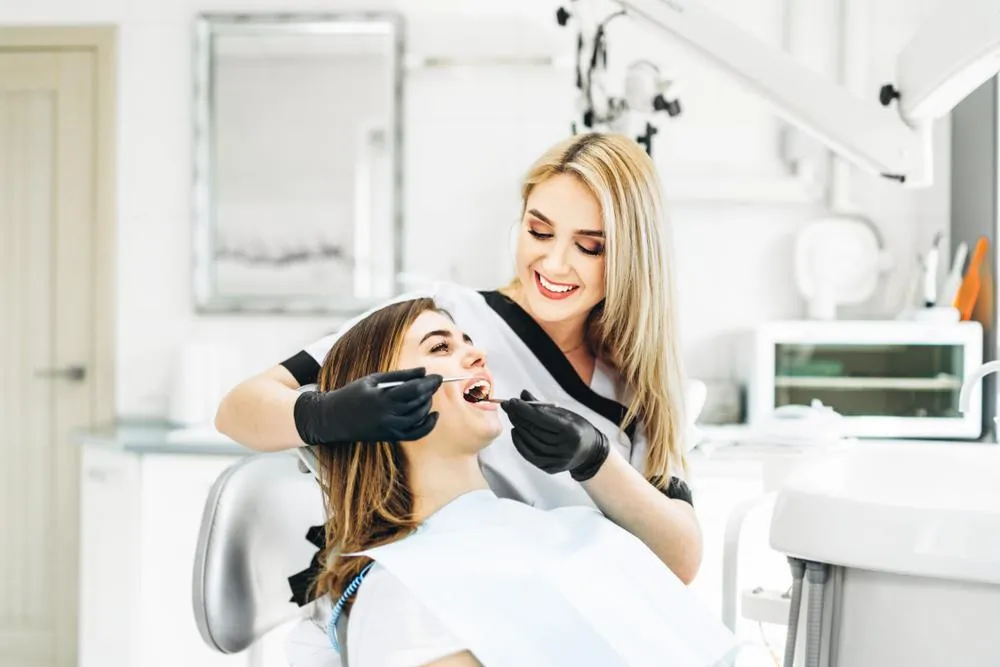
Beyond the Chair: Creating a Sanitary Environment in Dental Clinics
Beyond the Chair: Creating a Sanitary Environment in Dental Clinics

Beyond the Chair: Creating a Sanitary Environment in Dental Clinics
In dental clinics, where procedures often involve direct contact with patients' mouths and bodily fluids, maintaining a pristine environment is non-negotiable. The high risk of cross-contamination demands stringent cleaning protocols to ensure patient safety and uphold the clinic’s reputation. This blog dives into the essentials of creating and maintaining a sanitary environment in dental clinics.
Introduction: The Critical Importance of Cleanliness in Dental Clinics
In the unique environment of a dental clinic, cleanliness transcends basic hygiene—it's a core aspect of patient care. Given the invasive nature of dental procedures, the potential for spreading infections is significant. Effective cleaning and sterilization practices are crucial not only for patient health but also for building trust and confidence in the dental practice.
Area-Specific Practices
Each area of a dental clinic requires a tailored approach to cleaning:
Reception Areas: These are high-traffic zones where cleanliness contributes to first impressions. Regular dusting, vacuuming, and disinfecting of surfaces such as counters, chairs, and door handles are essential.
Treatment Rooms: Here, the focus is on disinfecting surfaces that come into direct contact with patients, including dental chairs, lights, and trays. Between each patient, all surfaces must be wiped down with appropriate disinfectants.
Sterilization Rooms: These areas are the heart of infection control in dental clinics. Protocols must be strictly followed to ensure that all instruments are properly cleaned, sterilized, and stored.
Focus on Dental Tools
The sterilization of dental instruments is not just a regulatory requirement; it's a critical procedure to prevent the transmission of infectious diseases. Autoclaving is the most commonly used method for sterilizing tools, involving high-pressure saturated steam. It’s vital that staff meticulously follow the steps from pre-cleaning and packing to autoclaving and dry storage to ensure instruments are safe for reuse.
Regular vs. Deep Cleaning
While daily cleaning is imperative, deep cleaning routines are also vital and should be conducted on a more extended schedule (e.g., monthly or quarterly):
Daily Cleaning: Involves wiping down all surfaces with disinfectants, sterilizing tools, and managing waste appropriately.
Deep Cleaning: Focuses on more intensive tasks such as cleaning HVAC systems, replacing filters, and thoroughly cleaning hard-to-reach areas.
Patient Safety
A clean clinic directly impacts patient safety. Well-maintained environments reduce the risk of infection, enhance patient experiences, and foster a sense of security. Cleanliness is a visible indicator to patients that their health is valued and taken seriously.
Staff Protocols
Hygiene protocols for clinic staff are just as important as the cleaning procedures. These include:
Hand Hygiene: Regular and thorough washing of hands, especially before and after treating each patient.
Protective Gear: Use of gloves, masks, and eye protection to prevent the spread of pathogens.
Personal Cleanliness: Ensuring personal grooming and cleanliness to avoid any hygiene-related issues.
Conclusion
The commitment to maintaining stringent cleaning standards in dental clinics is indispensable for patient safety and the overall quality of healthcare. A well-implemented cleaning regimen not only prevents the spread of infection but also enhances the overall patient experience, reinforcing the clinic’s reputation as a trustworthy and safe place for dental care. By prioritizing cleanliness, dental clinics can ensure they provide the highest standards of care and maintain a competitive edge in the healthcare industry.
Chris Cassady
Empire Serv Inc
15 S. Fayetteville Street
Suite 203-F
Asheboro, NC 27203

